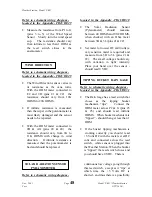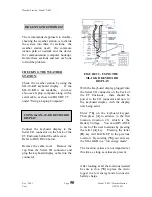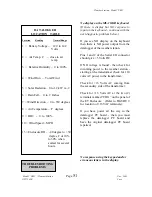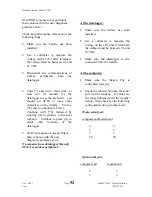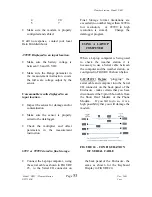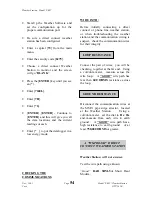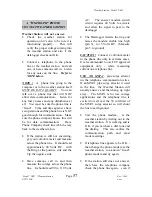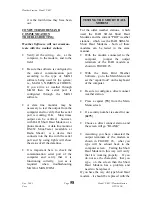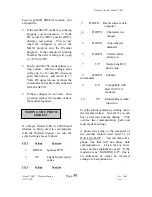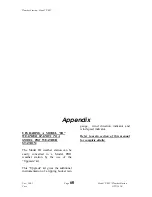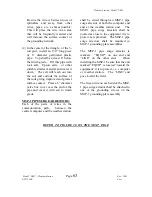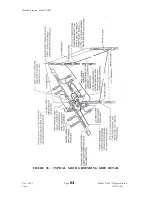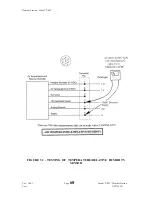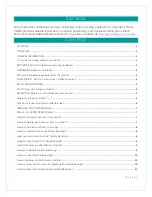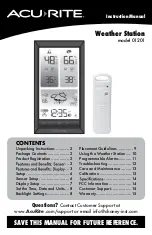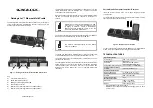
Weather Station - Model “PRO”
Nov., 2001 Page
62
Model “PRO”- Weather Station
Cozz GT27145B
is nearest to the equipment, so as to
have a minimum of exposed wire
between the equipment and the surge
arrestor itself.
Use 3M - DBY or DBR Direct Burial
splice kits for ALL wire splices.
GROUND RESISTANCE
- With the 3-
rod grounding grid we are attempting to
get a ground resistance of
5 OHMS
or
less, if at all possible. Any thing above
15 OHMS is of little value for
protection. In order for the surge
arrestors to be effective they must be
able to discharge to ground rather than
allow the surge to go to the electronic
components. Therefore the “HIGHER”
the resistance to ground (higher OHM
reading) the
chance of the surge being shunted to
ground rather than go to the electronic
components. From this you can see that
it is also important to maintain a “Good
Ground” at ALL times.
BENTONITE CONTACT:
In using
grounding rods we are depending upon
the “contact” of the surface of the rod to
the soil. The greater the contact the
better chance we have of obtaining a
“good” ground. If you are in a soil type
that you know will not give good surface
contact with the rod, you may want to
consider drilling a 4” to 6” diameter hole
in which to place the ground rod. You
can then back fill around the rod with
Bentonite or other similar material that is
very dense and in this way increase the
contact of the rod with the soil.
ROCKY CONDITIONS:
In areas
where you are unable to drive a rod or to
bore a hole for a rod, you may need to
consider laying the rods horizontal 12
inches or so below the surface on a good
6” deep bed of soil or Bentonite. Again
rods should be 8’-0” apart and tied
together with #10 gauge or larger bare
copper wire at both top and bottom of
the rods to form a grid.
ROCK LAYER:
Where a rock layer is
found under a shallow layer of soil, a
4’-0” x 4’-0” square piece of sheet steel,
3/8” to ½” thick, should be considered
ot be laid horizontally on a 4” thick layer
of soil or Bentonite over the rock layer.
A bolt or short piece of steel rod welded
to the plate will provide a means of
connection to the steel plate. The plate
should be covered to finish grade with
good top soil.
IMPROVING EARTH GROUNDS:
When a grounding grid is first installed
you are unable to get a true OHMs
reading, since the rod surface will not be
in good contact with the soil. The grid
must be installed for 5 or 6 weeks before
a meaningful reading can be obtained.
It is also recommended that the grounds
be checked at least once a year and in
severe lightning areas perhaps as often as
two or three times a year.
NOTE ! A good reading CANNOT be
obtained with a volt/ohm meter. A
Meggar or Vigra-Ground type
instrument must be used to check the
ground resistance.
If unsatisfactory readings are obtained,
the ground may be improved in one of
the following ways:
(1)
Extend a #6 or larger bare copper
braided wire from one of the rods out
across a fairway and buried a
minimum of 12” below the surface.
Содержание Pro
Страница 2: ......
Страница 10: ......
Страница 35: ...Weather Station Model PRO Model PRO Weather Station Page 25 Nov 2001 GT27145B Cozz FIGURE 11 CROSS ARM MOUNTING...
Страница 80: ......

